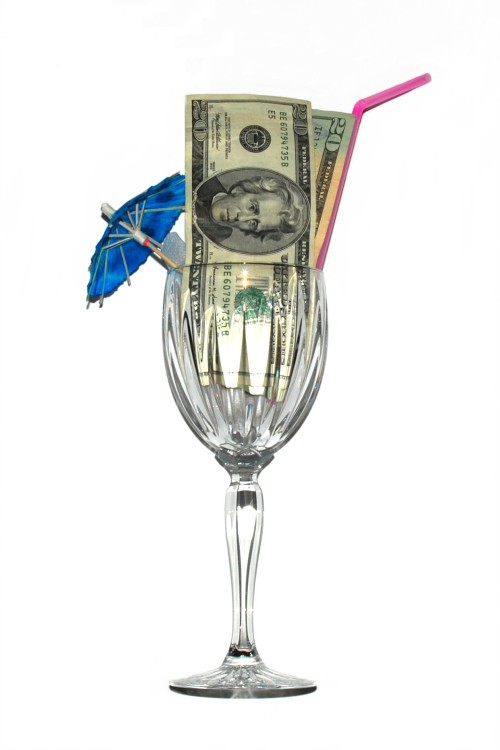Photo: Bill Barber, “1958 Edsel – Lousy Car But Great Planter,” visualhunt.com
Guest Post by Desiree Villena
Upon finishing work on your book — and I mean finishing everything, from editing to getting a cover design to actually publishing it — your natural instinct may be to sit back and relax. You’ve worked very hard, so at this point you’d just like to watch as readers come pouring in. But of course, your job’s not over yet: you still have to put your work out there to your potential audience before they can buy it.
Book marketing is far from a breeze — especially not in our media-saturated world. Whether you’re going down the traditional or indie publishing route, you’re going to have to put in some work. If you’re taking the latter approach in particular, it’s natural to be overwhelmed by all you have to do. And that’s when you make mistakes.
To help you succeed with this daunting task, here are five common book marketing mistakes that you can easily avoid!
Mistake #1: Trying to market to everyone
Very few products — books or otherwise — are bought by everyone. Generic things like toothpaste are quite universal, but even then, consumers will have preferences and distinctions. We have toothpastes for children and for adults, for whitening and for gum health, with extra mint flavor and with activated charcoal — the list goes on and on. Apply this same line of thinking to books and you’ll see that readers can be segmented into groups, a few of which will have much more interest in your book than others.
Thus, the important thing is to find, understand, and target those readers. Be specific about who you’re targeting. For instance, if you’re writing a nonfiction book on the psychology of children, ask yourself which groups of parents will want to read it. Will they be younger parents who are having kids the first time? Or will it be single parents who take a particular interest in your work?
This may affect some of your writing, but more importantly, it’ll help you reach the right groups of people when you promote your book. Fortunately, specificity doesn’t limit your potential reader base; in fact, it gives your book a unique and intriguing perspective that sets it apart from your competition.
Mistake #2: Doing a bit of everything
If you try to do a bit of everything, you’re fully committed to nothing. As with the previous mistake, authors tend to be overwhelmed by all the marketing choices available to us. To maximize your visibility, you’re often inclined to be on every social media platform and have ads everywhere, from Facebook to BookBub. You may also try to organize offline meet-ups, live events on social media, email marketing campaigns, and newsletter swaps with other authors.
You will fall into the trap of overworking yourself with this ever-expanding to-do list. What’s worse, when you’re occupied by so many things, it’s hard to take stock and examine any one strategy, in order to see how it’s doing and figure out what’s working and what could be improved.
One tactic that might help here is copying the strategies of authors who write books in the same genre as you. Say you’re a mental health professional who is publishing a book on social anxiety — consider going live on Facebook or creating forums on your site regarding this issue, where you can offer your expertise! On the flip side, Twitter’s character limit won’t provide you with the same opportunity to discuss things in depth, and you might discover that your target readers don’t “hang out” there. It’s thus better to make use of the spaces where more potential readers are active.
Mistake #3: Neglecting your mailing list
Growing a list of newsletter subscribers is crucial. It’s how you build a customer base even before you release your book. It’s a way to keep your most loyal readers by your side for future projects. And it’s a gateway for other marketing strategies, such as newsletter swapping. So don’t disregard your mailing list, even if you think many people sign up to newsletters without really reading them.
Of course, people read your newsletters — at least the ones who are actually likely to buy your book. And what’s more, you can actually use that list to customize who your Facebook ads target — just import the subscribers’ email addresses and use them as your audience! This way, your ad won’t be competing with numerous others, and your investment will be more worthwhile as more people who’d seen your ad would go on to buy your book.
Mistake #4: Not making full use of Amazon
When you list your book for sale on Amazon, what do you usually put for genre and keywords? Many first-time authors stick to one rather vague genre — like “Fiction” — and a few haphazardly selected keywords. Well, if you look at the list of sub-genres on Amazon, you’ll see that “Literature & Fiction” is separated into 20 others sub-categories, including geographical differentiations, such as British and American.
The key to selecting your category, and keywords, lies in picking the right balance between the relevant ones and the ones that don’t have overwhelming competition. You usually get to pick two categories and seven keywords, but you can contact Amazon directly to add more. Finding the best tags takes a bit of digging, but it will pay off when your book falls right into the lap of your target audience.
Mistake #5: Viewing marketing as a one-time thing
Today’s self-publishing authors, unfortunately, are not just writers. When you take on this job title, whether as a full-time or part-time occupation, you are making yourself a public figure. And just as you wouldn’t cut off contact with your literary agent or publisher once the deal is done, don’t stop reaching out to readers either!
How should you do this? Maintain an online presence through which you can communicate with your existing and potential readers. Simply telling them about your work isn’t enough; you should also encourage them to ask questions and discuss your book with you and other readers, thereby nurturing their interest in you as an author. In doing so, your subsequent books will have a pool of already keen readers who would buy and perhaps even recommend them to others. Never underestimate the power of word-of-mouth — your readers will become your little publicists!
So suddenly disappearing after your marketing campaign is over won’t do you any good. Retreat to your writing crib to work on your next volume if need be, but let your followers know, so that they’re excited for what’s to come.
The true art of book marketing is finding the best way to connect with people who are as passionate about something (that thing you wrote a whole book about!) as you are. There will be ups and downs, trials and errors, but at least now you can avoid the biggest pitfalls that awaits you on this journey.
Desiree Villena is a writer with Reedsy, a marketplace that connects authors to the very best publishing resources and professionals. She’s particularly passionate about independent publishing and hopes to help as many aspiring authors as possible reach their dreams. In her spare time, Desiree enjoys reading contemporary fiction and writing short stories.

























 8 Ways to Get “Blurbs” for Book Marketing Photo by Morguefile
8 Ways to Get “Blurbs” for Book Marketing Photo by Morguefile



